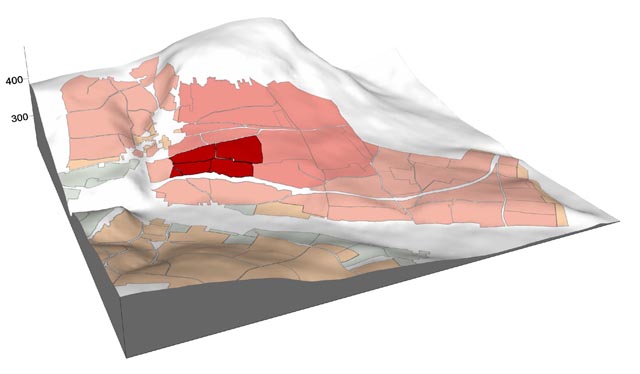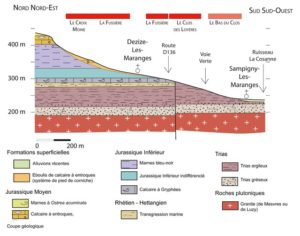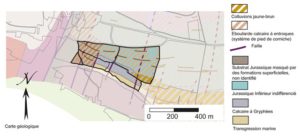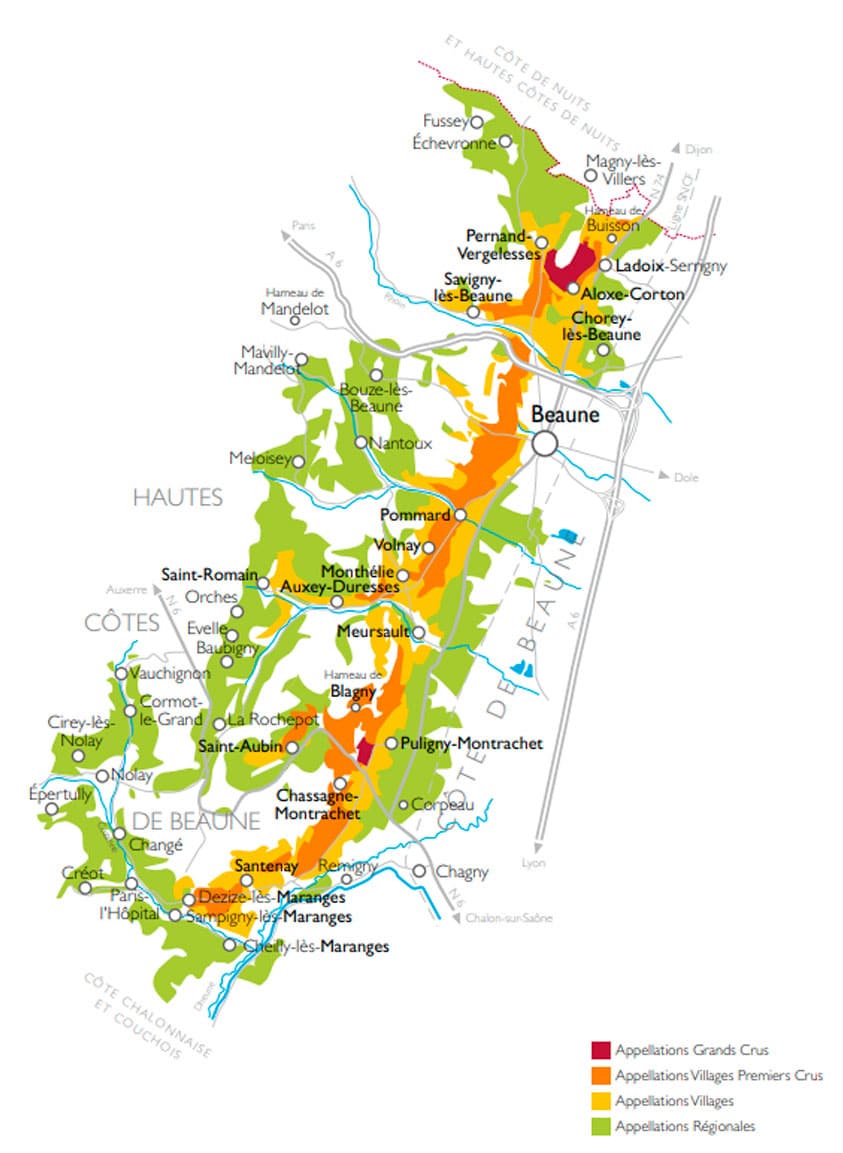Access reserved for producers
of Maranges wines
Le Clos des Loyères
Surface area of the locality: 11 ha 32 a 16 ca
To the southwest of the Les Maranges premier cru hillside, the Clos des Loyères locality extends from an altitude of 270 to 312 metres (average 296 m). The slopes are gentle (3%) to very steep (20%) (average 11%). The Climat has a South, Southwest exposure.

The soil and subsoil
Two main entities make up the subsoil of the Clos des Loyères.
An undifferentiated Jurassic substratum (grey-black marl, possible giant gryphaea limestone, grey-blue marl) is covered with abundant scree and whole sections of the crinoidal limestone cliff that dominates the wine-producing hillside.
The lower part of the locality rests on the gryphaea limestone and the transgressive characteristics (clay and limestone).
The nature of the Jurassic substratum is poorly understood at the far west of the Clos des Loyères.
On the limestone scree that conceals the Jurassic deposits, the soil is stony, draining, with highly variable thicknesses. To the east of the Clos des Loyères, the soil is yellow-brown with stones and frequent chert.
The origin of the name
The term “clos” derived from the Latin “clausus” (closed) is frequently encountered in wine toponyms. It is a reference to the boundaries of the plot or wall surroundings.
Loyères may refer to locations frequented by wolves, but the clos is very close to the village. It is more logical to consider Les Loyères as rented land (derived from old French loier, from the Latin locare).
The wines
Please note that this clos is a bottle for enthusiasts of Les Maranges for ageing. The fruit is coated with a dense tannic covering where the tannin is candid. A preservation of three years is necessary in order to awaken its full splendour. It goes perfectly with prime cuts of beef.




